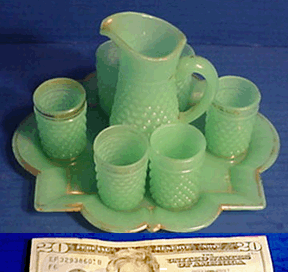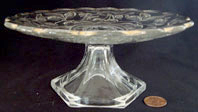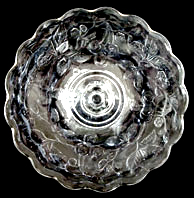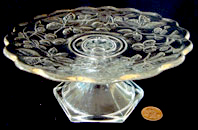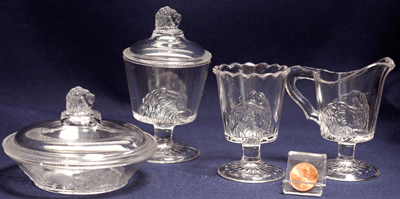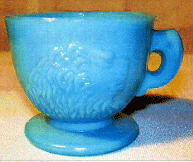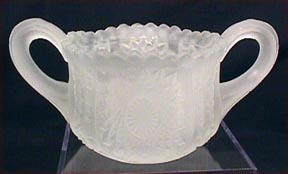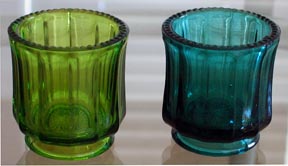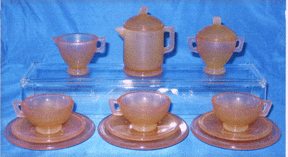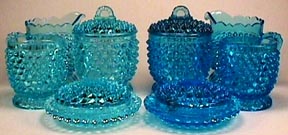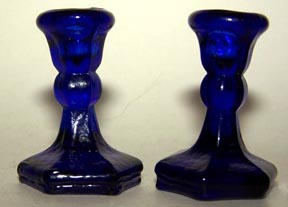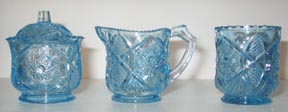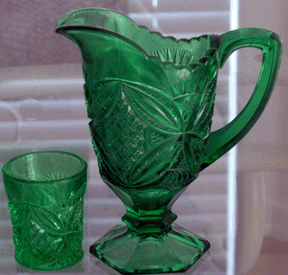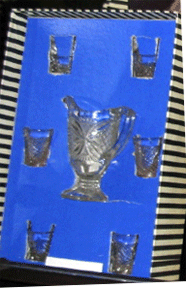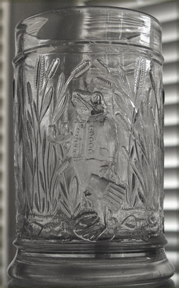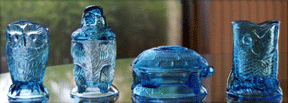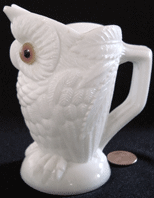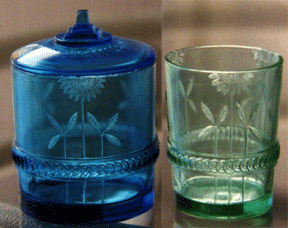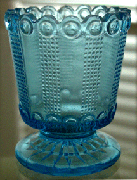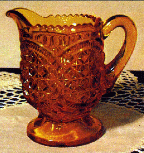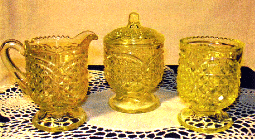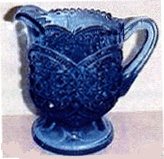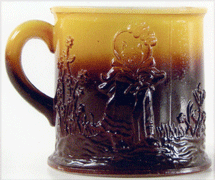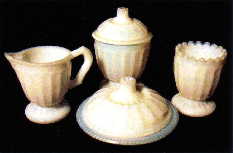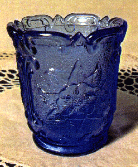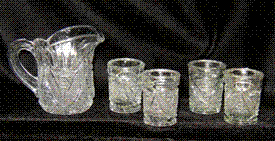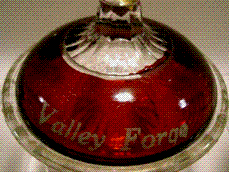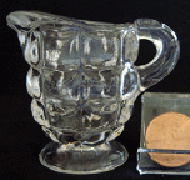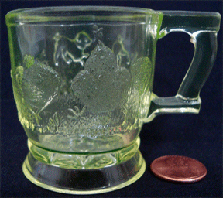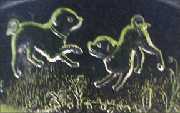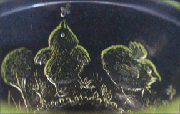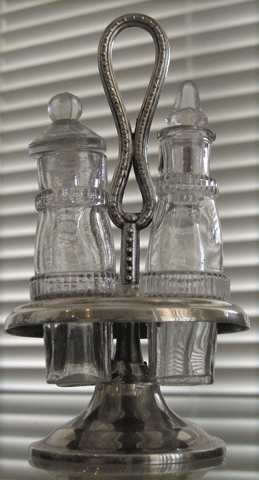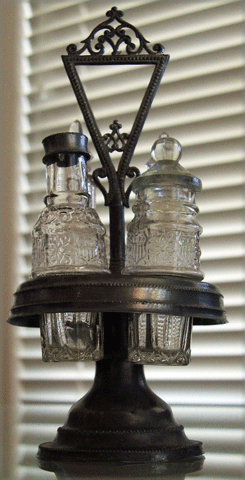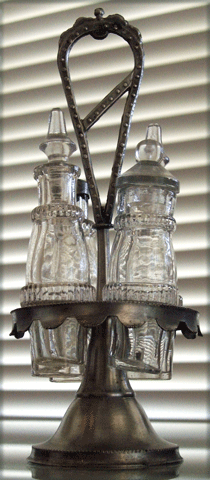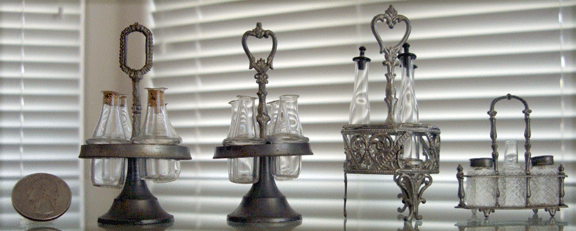These are 4 miniature caster sets. Whitmyer's book has the tiny three piece set on the far right with the checkerboard texture bottles on page 103 of the Encyclopedia of Children's Dishes book, but the center bottle is missing. My picture shows it. The same page shows the tiny blown bottle set on the right, but the finial/handle is missing. My two (far left and second to left) have their finials.
The final piece in the group (second to right) shows an undocumented filigree bottle holder with taller blown bottles, which have their original stoppers (shown close-up in Lechler's TOY Glass book, page 130).
The bottles were made by glass factories and then shipped to the companies that made the metal holders. Some holders are found with more than one pattern of bottle. The bottles are also named for patterns or shapes...American Shield, Blown Molded (or Sherwood for the wire holder it is found in), Drape, Paneled, Ribbon Band, Double Ribbon Band, Circle in Square, Lattice (Quilted), Diamond, Square, and Ribbed Band with rayed base.
Blown Molded (Sherwood), Paneled, and Ribbon Band (single band) are
documented to have been made by Boston & Sandwich.
The American Shield pattern is believed to have been made as part of the Centennial Celebration in 1876 and can be found in a holder marked "CENTENNIAL". It is also the only pattern of bottle to have been found in color....cobalt!
The sets came in two, three, four, and five bottle sets. A 4 bottle set usually contains a bottle for pepper (possibly salt), 2 cruets (vinegar or oil) and a mustard. The peppers had metal shaker lids, the cruets and mustards came with glass lids, depending on how the bottle rim was finished. Bottles with sharp, cut off rims would require a metal lid. Finished, polished rims would take a glass stopper.
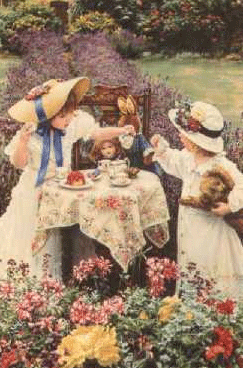

![]()
